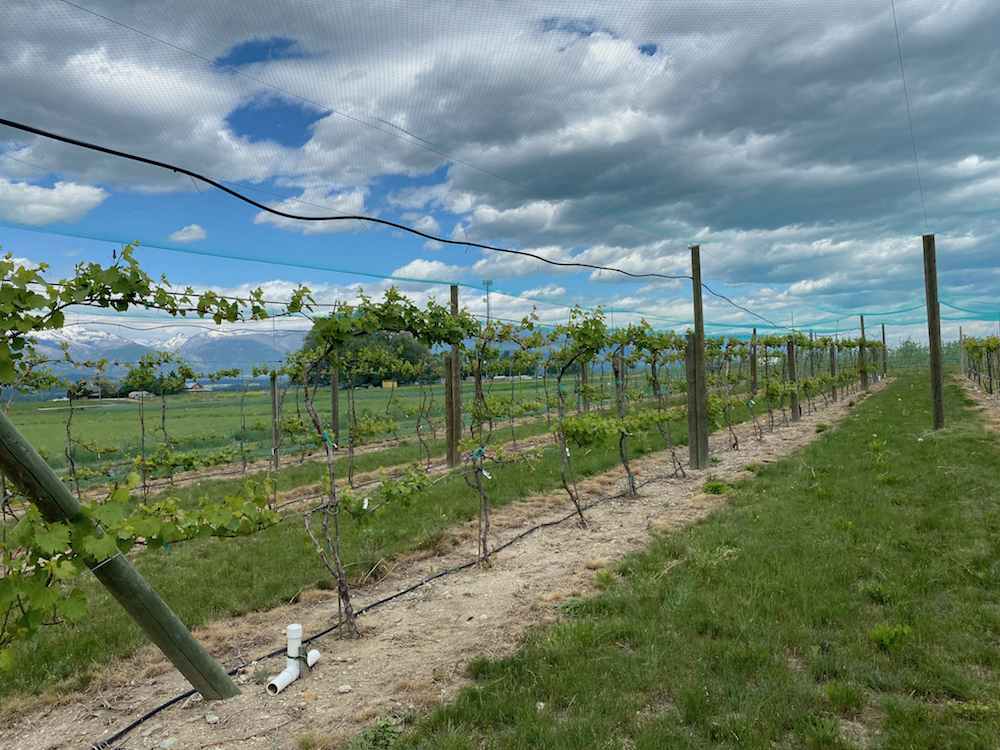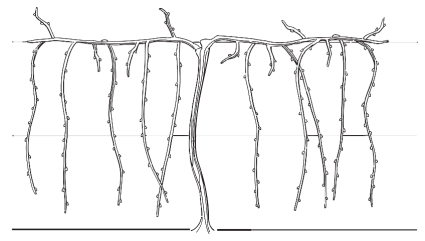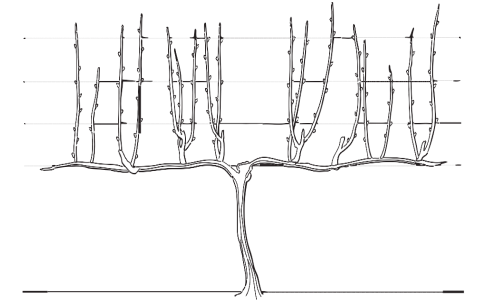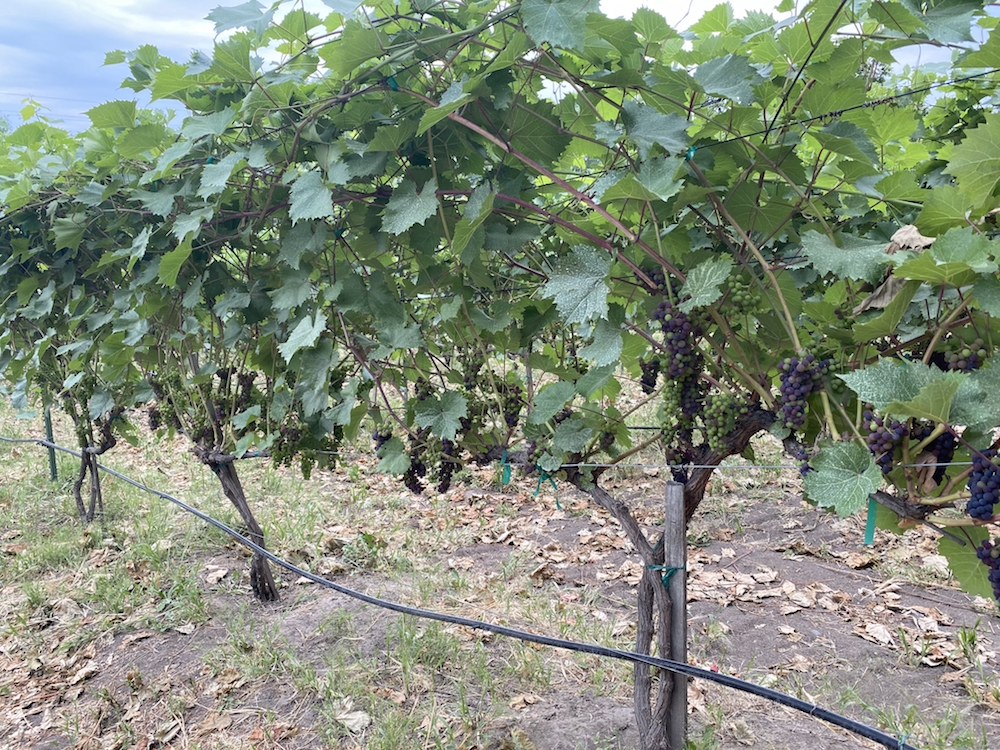Choosing a Trellising System

The older section of WARC's research vineyard uses a rather unconventional version of the high wire cordon trellis, as it has a second lower cordon in order to allow for greater yield. These cordons will likely eventually be removed to better mimic a typical Montana vineyard.
Many different types of trellising systems exist to accommodate the different cultivars, growth habits, and vigors of grape vines. We will be focusing on High Wire Cordon and Vertical Shoot Positioned trellises for this guide, as we have found through research and word-of-mouth that they tend to be the most successful systems for the cold-hardy cultivars that succeed in Montana.

Diagram of a typical high wire cordon trellis system (courtesy of Minnesota Grape Growers Association, University of Minnesota).
High Wire Cordon Trellis
Cold-hardy grapes grow vigorously and thus are particularly well-suited to high wire cordon trellising, as it requires less labor and investment as the season progresses. A high wire cordon training system consists of 1 to 3 wires, with the top wire strung anywhere between 4 and 6 feet above the ground. The lower wire(s) provides support for young vines in the process of reaching the top wire, as well as older vines that become heavy with vegetation and fruit. In this system, two cordons should be trained up to the top wire, one going in either direction along the wire. This high positioning allows for good sun exposure to the fruit and the “renewal zone” of the vine, helping to ensure better survival of fruiting buds for the next season. This system is also ideal for its simplicity of pruning practices and shoot positioning, and it is more easily adapted to mechanization than other, more complex training systems.

Diagram of a typical VSP trellis system (courtesy of Minnesota Grape Growers Association, University of Minnesota).
Vertical Shoot Positioned Trellis (VSP)
A VSP trellising system consists of a static cordon wire (usually installed ~3 feet above the ground) and multiple pairs of movable “catch wires” above that base cordon wire. Shoots are trained vertically from the cordon to eventually reach and be tucked into the more flexible catch wires. Ideally, this creates a more organized growth habit and encourages fruit clusters to hang below the vegetative shoots, making for easier pruning access and eventual harvest. While VSP is one of the more visually appealing of the single curtain systems, it is more costly and can require more maintenance than simpler systems like the High Cordon. It is also most ideal for cultivars with low to medium vigor. For a good illustration of what VSP looks like in practice, you can refer to the Minnesota Grape Growers Association’s YouTube channel, which has videos detailing vineyard systems and best practices: Shoot Positioning VSP (video).
 A great example of effective use of VSP trellising at Spotted Bear Vineyard near Polson,
MT.
A great example of effective use of VSP trellising at Spotted Bear Vineyard near Polson,
MT.
Below are some additional resources and webinars for choosing, planning, and executing a training system:
- Trellis Selection and Canopy Management (PDF), Nick K. Dokoozlian, UC Davis;
- Comparing and Contrasting Vertical Shoot Positioning and Top Wire Cordon Training Systems, Tim Martinson, John Thull, and Bob Utter, Northern Grapes Project Webinar;
- Training Systems for Grapevines (PDF), Paul Domoto (Prof. Emeritus, Iowa State University), Northern Grapes Project Newsletter (begins pg. 8).
- Constructing a Vineyard Trellis (PDF), Paul Domoto (Prof. Emeritus, Iowa State University), Iowa Grape Growers Conference.

